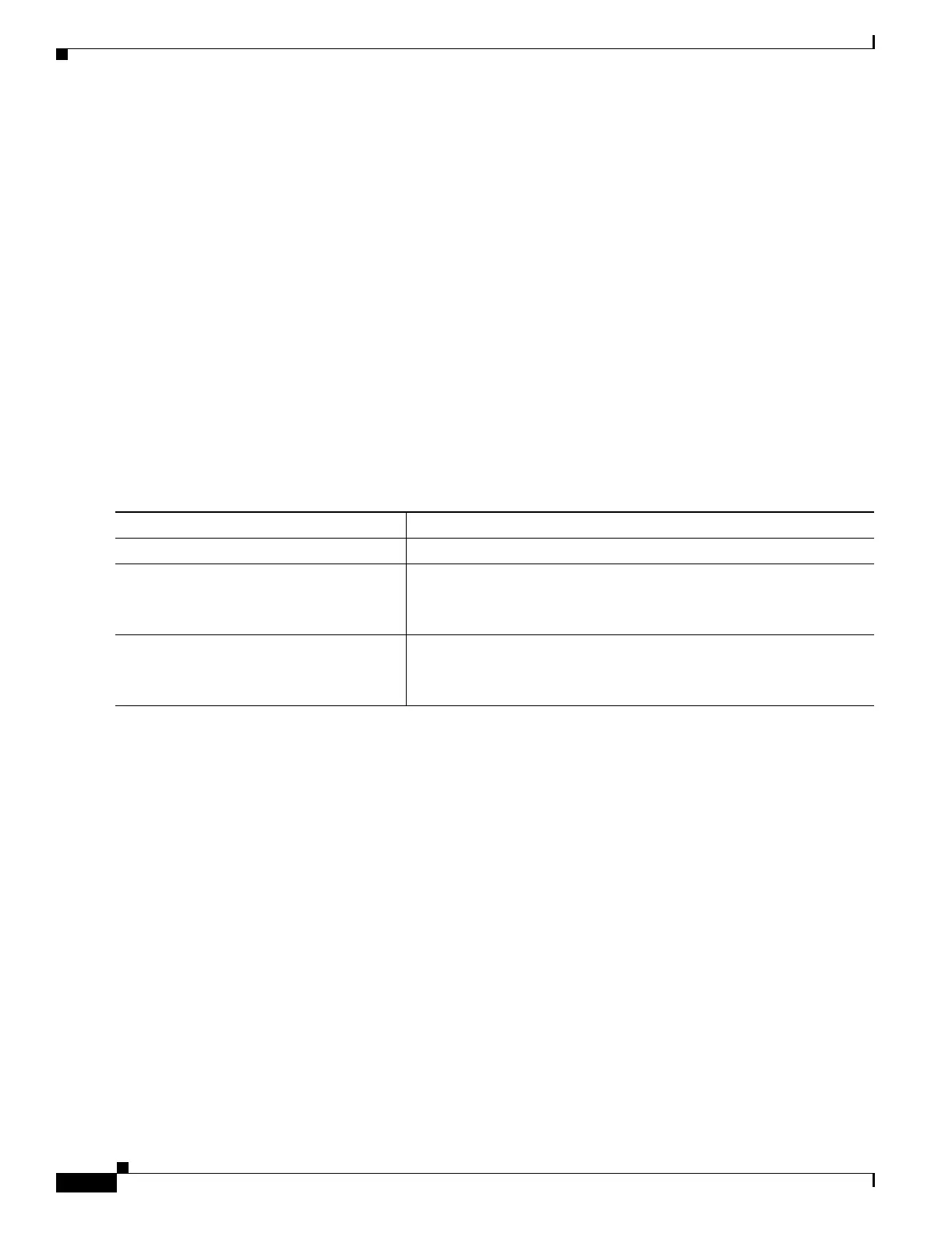26-86
Catalyst 3750 Metro Switch Software Configuration Guide
78-15870-01
Chapter 26 Configuring QoS
Configuring Hierarchical QoS
Configuring CBWFQ and Tail Drop
CBWFQ creates a queue for every class for which a class map is defined. Packets satisfying the match
criteria for a class accumulate in the queue reserved for the class until they are sent, which occurs when
the queue is serviced by the fair queue process. When the maximum packet threshold that you defined
for the class is reached, any more packets destined for the class queue are dropped according to the tail
drop or WRED mechanism.
You configure tail drop by using the queue-limit policy-map class configuration command in an egress
policy-map attached to an ES port. This command configures the maximum threshold for tail drop.
Packets are queued until the maximum threshold is exceeded, and then all the packets are dropped.
Before beginning this procedure, make sure that you have reviewed the configuration guidelines and
have created the class map to isolate traffic. For more information, see the “Hierarchical QoS
Configuration Guidelines” section on page 26-76 and the “Classifying Egress Traffic by Using Class
Maps” section on page 26-78. For information on how to configure WRED, see the “Configuring
CBWFQ and DSCP-Based WRED” section on page 26-89.
Beginning in privileged EXEC mode, follow these steps to configure class-level CBWFQ and tail drop
in a service policy for outbound traffic. This procedure is optional. The examples that follow the
procedure show how to configure class-level and VLAN-level CBWFQ and tail drop.
Command Purpose
Step 1
configure terminal Enter global configuration mode.
Step 2
policy-map policy-map-name Create a policy map by entering the policy-map name, and enter
policy-map configuration mode.
By default, no policy maps are defined.
Step 3
class class-name Specify the name of the class whose traffic policy you want to create
or change, and enter policy-map class configuration mode.
By default, no traffic classes are defined.

